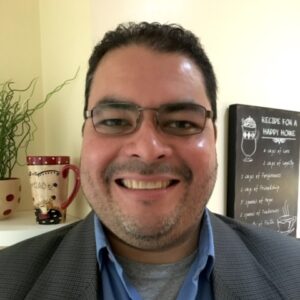
Salsa Music and Cultural Health
One of my social media names is “salsasanchez,” a not-so-subtle hint that I love everything about salsa music! Its history, genres, sounds, musicians, and, of course, the dancing! As a bass player, the only thing I love more than dancing salsa is playing the salsa groove on my instrument—or better yet, playing it while dancing! My picture of the new creation includes playing an upright baby bass in a Rubén Blades’ salsa band.
But what does salsa have to do with cultural health? Could salsa music foster healthy forms of engagement with neighbors from cultures other than our own? In our seminary’s latest round of curriculum review, cultural health became one of seven desirable health outcomes in the formation of our students for pastoral ministry. I was assigned to assist first-year incoming students with an initial way to assess their levels of cultural engagement. As a theoretical framework for this initial self-assessment, I suggested thinking in terms of three levels of interaction with the cultural other, namely, multicultural, cross-cultural, and intercultural engagements—the third option being the more involved or deeper (and yes, healthier) form of interaction to work towards.
The multicultural level merely signals an awareness of the presence of people from multiple cultures in our midst. Such an awareness is a first step in cultural engagement and may lead to knowledge of the other at a theoretical level. The image that comes to mind is that of parallel planets (worlds) that are aware of each other from afar but do not have meaningful contact with one another. It is the least demanding form of cultural health.
The cross-cultural level moves beyond awareness of the cultural other toward movement into the other’s cultural world. An apt image for this level is a bridge, which provides a path from one world into the next. Although cross-cultural language can promote more involvement with the cultural other, it can also fall prey to unilateral forms of engagement where the “higher” culture crosses into the “lower” culture to change it—a one-sided crossing that gives rise to unhealthy paternalism and dependency.
Which leads us to the intercultural level, the most demanding engagement. The image of a team working together toward a common goal, with each member contributing something unique to the community, best gets at the goal of intercultural collaboration. Hopefully, such collaboration leads to deeper relationships of mutual interdependence in which cultural others move from being strangers toward living as neighbors and friends.
To move from my three-level theoretical paradigm into a simple pedagogical tool for self-assessment, I imagined how the use of salsa music could creatively assist students to get an embodied sense of these levels of cultural health in a classroom setting. Enter Rubén Blades! I played one of his songs and asked students to listen for the “clave” rhythm (the groove that makes salsa work) in the piece, which I demonstrated for them by clapping my hands to the tune La canción del final del mundo. The students’ first task was simply to listen to and find the clave in the salsa—an exercise in basic multicultural awareness.
But then, I asked students to perform a cross-cultural exercise, to go a little deeper in their engagement with the cultural other by clapping the clave themselves. Some struggled, some succeeded, but all had crossed into the world of the clave! They were not only aware of the sounds of salsa, but participated in music-making in a different (although to some extent, artificial) cultural environment.
Finally, I demonstrated for students what a salsa clave looked like in dancing, showing them the basic steps involved. Then, I asked if any of them would be willing to try out the dance. Volunteers agreed to dance next to each other, replicating my footwork to the best of their abilities. Soon enough, we were engaging in an intercultural exercise, one in which we were collaborating in practicing and performing a salsa piece together.
Others in the classroom did not dare to dance, but were happy to keep clapping the clave. Some simply listened in awe. Which shows how students at our institutions are always operating at different levels of cultural health with some cultural other. The creative use of salsa music to challenge cultural comfort and instill a vision for a more generous engagement gives me hope in a healthier world—indeed, in a new creation—where we dare to work and play together in clave time. Let’s salsa!
I really liked your article!! Thank for sharing such a good piece of information.
Thanks, Jacqueline. I appreciate it. Leo